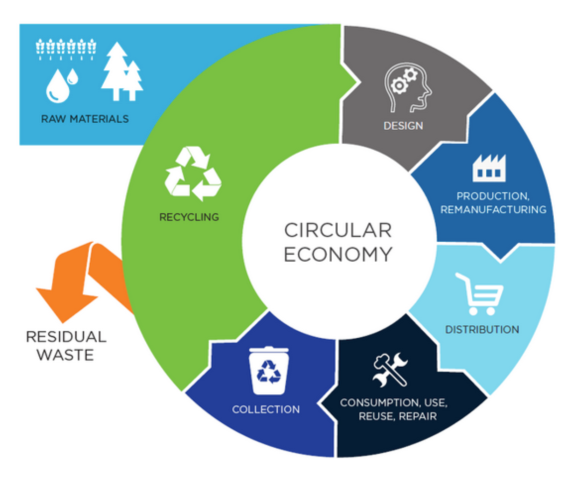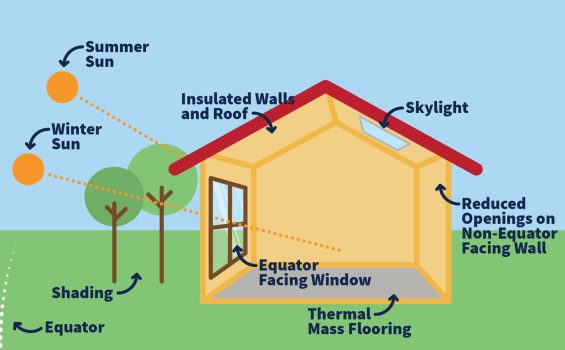
Climate Explainer: The Circular Economy
29 January 2024
The Circular Economy
The term “circular economy” describes a radical change from the so-called “linear economy” that has been the standard since the beginning of the Industrial Revolution – also described as ‘cradle-to-grave’ design, the throwaway economy, or the degenerative economy. Powered by fossil fuel energy, its four stages are described as TAKE-MAKE-USE-LOSE. By contrast, a circular economy is regenerative by design. It runs on renewable energy and attempts to continually transform materials into other useful products and services, rather than discarding them as waste.
- Green Economics argues that the “linear economy” is fundamentally flawed because it runs counter to nature, which enriches itself by continually recycling and reusing its essential building blocks such as carbon, oxygen, water and nitrogen. Our dominant industrial model breaks away from these natural cycles in two major ways: it depletes nature’s resources and overloads the earth’s natural sinks with huge and multiplying amounts of waste matter and waste heat. One example is extracting fossil fuels, burning them and releasing carbon dioxide into the oceans and atmosphere. Another is cutting down forests to mine metals and minerals which are made into products that end up in landfill, where their toxic chemicals leach into soils, water and air. This dominant form of production is responsible for humans pushing dangerously close to several planetary boundaries, including a Stable and Safe Climate.
- To date, attempts to deal with the destructive features of this system, especially the excessive amount of waste heat and matter, have focused on treating them as ‘negative externalities’ and using a variety of market solutions such as pollution taxes, production quotas, tiered pricing. We must continue to pursue these solutions, as these have gone some way to easing humanity’s pressure on nature’s sources and sinks. However, Green Economics would argue that this approach cannot succeed in repairing the Earth’s natural systems because all it is doing is trying to limit the damage of an inherently degenerative design. We must radically change our design from a linear economy to a circular economy.
- The circular economy runs on renewable energy and attempts to continually transform materials into other useful products and services, rather than discarding them as waste. In fact, in the circular economy, “waste equals food”: instead of going to landfill, the leftovers of one production process (be they biological or metal) become the source materials for the next. The aim is for materials never to be “used up” but used repeatedly – or at the very least to minimise lost matter and heat.
- The circular economy is based on the regenerative design of the living world and attempts to mimic nature’s processes. Applied to the carbon cycle, this would mean putting an end to our industrial ‘exhale’ of carbon pollution and then, by copying plants, and learning to ‘inhale’ carbon dioxide into our products and store it in rich soils. Kate Raworth also describes this approach as Being Generous by Design: creating enterprises that try to reconnect nature’s cycles and gift as much back to nature as possible.
- The key to making this work is to think of all materials as belonging to one of two nutrient cycles; biological nutrients such as soils, plants, animals or technical nutrients such as metals, synthetics, plastics. In each of these cycles, materials are never “used up” or thrown away but used over and over again. To take one small example, coffee grounds should be returned to the soil, enriching it with cellulose, lignin, nitrogen and sugars.
- Technical nutrients are trickier, as they do not naturally decompose, so they must be designed to be restored, through repair, reuse, refurbishment – with recycling as a last resort. Mobile phones, for example, should be redesigned for easy recollection and disassembly, leading to refurbishment or reuse of all their parts.
Replacing the linear economy with a circular economy based on the regenerative design we observe in nature is an essential part of our struggle to combat climate change.

Sources
Kate Raworth’s marvellous book Doughnut Economics is essential reading to understand the circular economy, especially chapter 6 “Create to Regenerate.”


Discussion